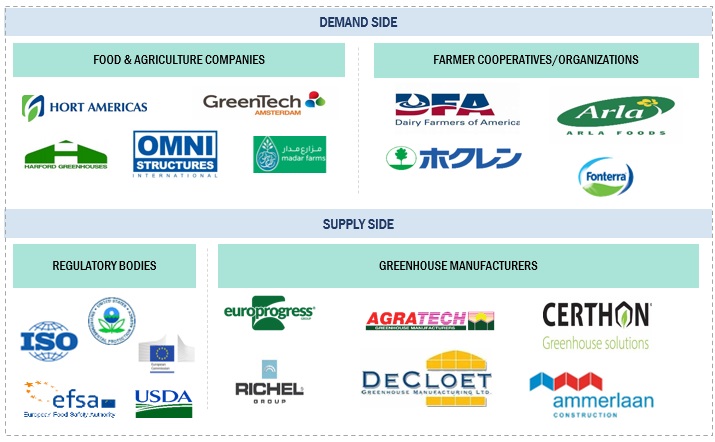The commercial greenhouse market is witnessing rapid growth as farmers, businesses, and technology providers increasingly recognize the value of controlled-environment agriculture. According to a recent MarketsandMarkets report, the greenhouse market is projected to reach USD 68.7 billion by 2028, up from USD 39.6 billion in 2023, growing at a CAGR of 11.6% during the forecast period.
This strong growth is driven by the need to protect crops from climate variability, expand production beyond regional limitations, and meet rising global demand for fresh and sustainable produce.
Why Commercial Greenhouses Are Growing
A commercial greenhouse allows growers to cultivate a wide range of crops—including those not naturally suited to local climates—creating opportunities for crop diversification and higher revenues. They also offer protection against extreme weather events like hail, frost, or heavy rainfall, helping farmers minimize risks and reduce crop losses.
As environmental concerns grow and demand for year-round fresh produce continues to rise, the greenhouse horticulture market is becoming a vital part of modern agriculture.
Market Insights by Segment
Plastic Greenhouses Lead by Type
The plastic greenhouse segment holds the largest share of the market. Their versatility—ranging from small stand-alone units to large gutter-connected structures—makes them highly adaptable. Plastic greenhouses also support higher yield capacity and are more cost-effective, encouraging adoption across both developed and developing markets. Increasing R&D investments and product innovations are further fueling this segment’s growth. This adaptability is especially valuable when establishing a professional greenhouse for agricultural production, which requires scalable and efficient solutions.
Hardware Dominates Equipment Share
Within equipment, the hardware segment leads the market. Essential components such as structural frameworks, lighting systems, irrigation, ventilation, and automated climate controls form the backbone of efficient greenhouse operations. These technologies ensure optimal growing conditions, improving yield quality and consistency while enhancing resource efficiency.
Request Custom Data to Address your Specific Business Needs
Vegetables Take the Largest Crop Share
The vegetable segment accounts for the largest crop share in the commercial greenhouse market. Vegetables remain a staple of global diets, and commercial greenhouses enable consistent year-round production. The push for locally sourced, sustainable produce is also aligning with commercial greenhouse farming, further driving demand.
Regional Spotlight: Europe Leads the Market
Europe dominated the commercial greenhouse market in 2022, supported by strong consumer demand for fresh produce, government incentives for sustainable farming, and the region’s openness to adopting advanced agricultural technologies. European growers continue to leverage commercial greenhouses to provide uniform supply and maintain competitiveness in global agriculture.
Key Players Shaping the Market
Leading companies are investing heavily in innovation and expanding their reach to capture emerging opportunities worldwide. Major players include:
- Berry Global Group, Inc (US)
- Signify Holding (Netherlands)
- Heliospectra AB (Sweden)
- PLASTIKA KRITIS S.A. (Greece)
- EVERLIGHT ELECTRONICS CO., LTD (Taiwan)
- Prospiant (US)
- RICHEL GROUP (France)
- Argus Control Systems Limited (Canada)
- Certhon (Netherlands)
- LOGIQS.B.V. (Netherlands)
- Lumigrow, Inc (Canada)
- Agra Tech, Inc (US)
- Hort Americas (US)
- Top Greenhouses (Israel)
- Stuppy Greenhouse (US)
With rising demand for sustainable agriculture, the commercial greenhouse market is entering a high-growth phase. Europe leads adoption today, but with expanding innovation and broader global demand, commercial greenhouse farming will continue to transform food production across the world.
Frequently Asked Questions
Q1. What is driving the growth of the commercial greenhouse market?
The commercial greenhouse market is growing due to rising demand for fresh, locally grown produce, the need for climate-resilient farming, and advances in automation and environmental control systems. Sustainable farming practices and government support are further accelerating adoption.
Q2. Which type of greenhouse is leading the market?
Within the greenhouse market, plastic greenhouses hold the largest share. They are cost-effective, versatile, and suitable for both small-scale and large-scale farming, offering higher yields compared to glass structures.
Q3. What role does hardware play in commercial greenhouses?
In a commercial greenhouse, hardware such as frames, lighting, irrigation, and automated ventilation is crucial. These systems help maintain temperature, humidity, and nutrient delivery, ensuring consistent and high-quality crop production.
Q4. Which crops benefit most from commercial greenhouse farming?
Vegetables dominate because they are a global dietary staple. Controlled environments in greenhouses enable year-round cultivation. Other segments like fruits, ornamentals, and nursery crops are also growing rapidly in the greenhouse horticulture market.
Q5. Which region leads the commercial greenhouse industry?
Europe leads due to strong consumer demand for fresh produce, favorable government policies, and advanced technology adoption. The region is a hub for building a professional greenhouse for agricultural production with a focus on sustainability.
Q6. What is the forecasted size of the greenhouse market by 2028?
The global commercial greenhouse farming sector is expected to reach USD 68.7 billion by 2028, growing from USD 39.6 billion in 2023 at a CAGR of 11.6%.
Q7. Who are some of the key players in this industry?
Leading companies in the commercial greenhouse market include Berry Global Group, Signify Holding, Heliospectra AB, PLASTIKA KRITIS, EVERLIGHT Electronics, Prospiant, RICHEL Group, Argus Control Systems, and Certhon.

